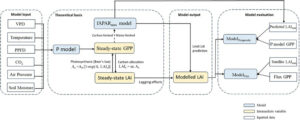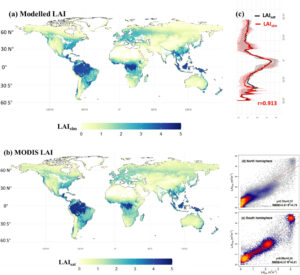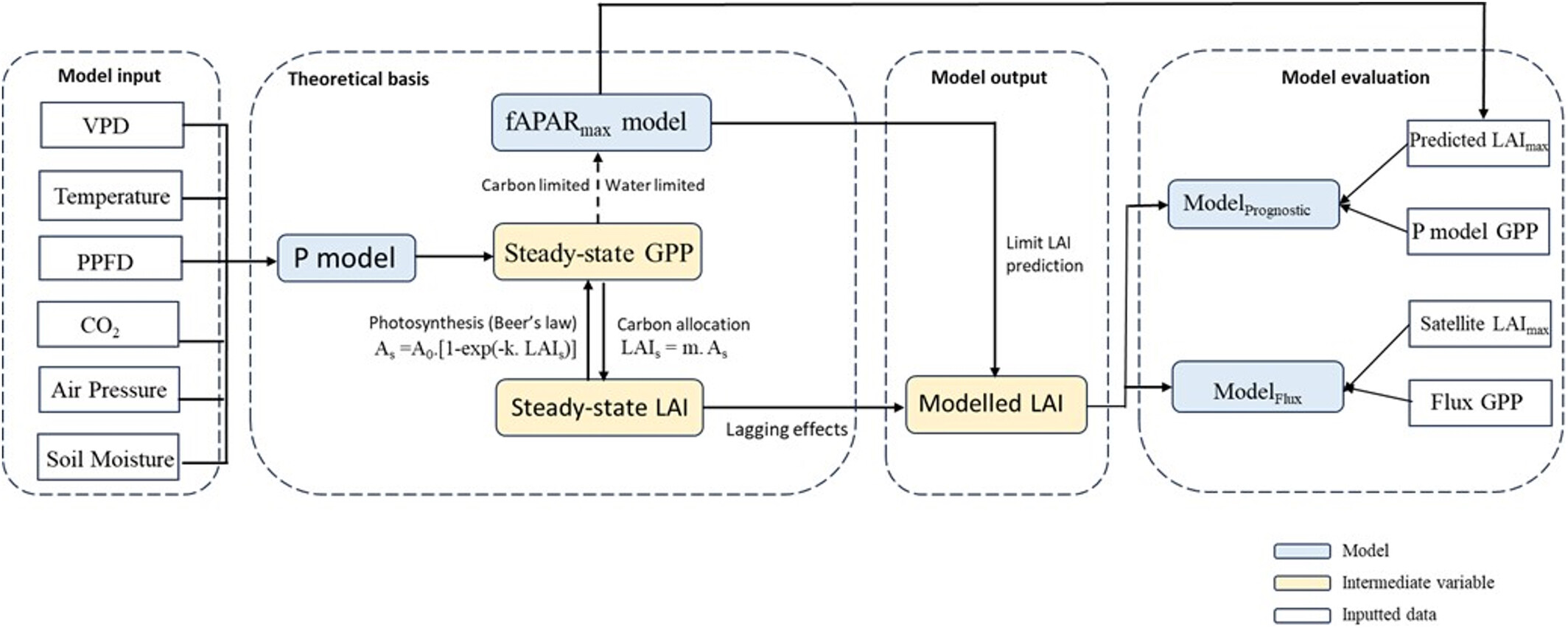Published in Global Change Biology, this new study led by LEMONTREE PhD student Boya Zhou proposes a breakthrough approach to modelling how leaf area changes over time—an essential piece of the climate-vegetation puzzle.
👉 Read the paper here
The seasonal rhythm of leaf growth and loss—the so-called leaf phenology—is a powerful force in Earth’s climate engine. It shapes how carbon, water, and energy flow between ecosystems and the atmosphere. But simulating this rhythm accurately in global vegetation and climate models has long been a challenge. Most existing models either rely on hard-to-generalise rules or demand large sets of empirical data tailored to specific plant types.
In this new study, Zhou and colleagues present a universal model that predicts the daily time course of leaf area index (LAI) using only climate inputs—no satellite data or species-specific tuning required.
Rethinking how we model leaves
The model builds on the theory that is central to LEMONTREE research- eco-evolutionary optimality—in this case, the idea that plants “choose” to grow and shed leaves at times when it benefits them most, based on environmental conditions. At its core, the model combines:
- The P model, a theory-driven and parsimonious approach for simulating gross primary production (GPP), the rate at which plants photosynthesize.
- A top-down algorithm to estimate the seasonal maximum LAI, balancing light and water constraints.
- A semi-empirical coupling between LAI and GPP that is applicable across biomes.
Instead of predicting discrete “events” like leaf-out or senescence, this model captures the emergent seasonal dynamics of LAI, sidestepping many of the uncertainties plaguing mechanistic phenological models.

Why It Matters
This model stands out for its global applicability, working consistently across a wide range of ecosystems—from temperate forests to tropical rainforests and dry grasslands—without the need for biome-specific parameters. It also outperforms 15 leading models from the TRENDY project, a key international comparison of global vegetation models, demonstrating its strong predictive capability. Crucially, the model is also less reliant on external data, operating independently of satellite-derived LAI, which makes it especially valuable for simulating vegetation dynamics in past climates or projecting them under future climate scenarios.
Results
- The model captures seasonal LAI changes across diverse climates and vegetation types, matching both and satellite data.
- It confirms that LAI is strongly linked to photosynthetic potential, supporting the idea that plants optimize leaf display in response to available energy and water.
- Some biases remain—for example, slight overestimation in spring at high latitudes and underestimation in dense tropical canopies—but these are well-understood and guide future improvements.

Bottom Line
This study represents a major step toward simpler, more general, and more theoretically grounded models of vegetation dynamics. By focusing on functional relationships that apply across biomes, it opens the door to better forecasting of how vegetation responds to climate change—from seasonal greening to long-term carbon uptake.
We hope this model will become a cornerstone of the next generation of global land surface models.
You can read the full paper here:
Zhou, B., Cai, W., Zhu, Z., Wang, H., Harrison, S.P. & Prentice, I.C. 2025. A general model for the seasonal to decadal dynamics of leaf area. Global Change Biology, 31(3) https://doi.org/10.1111/gcb.70125

